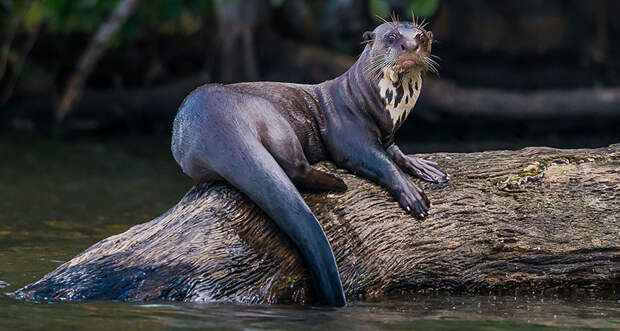Author: Sarah Zielinski / Source: Science News

After wild rubber prices collapsed in the early 20th century, rubber merchants in the Amazon turned to the wildlife trade to keep their businesses afloat.
They targeted many species, including two river otters: the giant otter and the neotropical otter. Only one of these species, though, the giant otter, was driven to near extinction. And new research on the patterns of the hunting trade has revealed how the giant otter’s biology, including its monogamous tendencies and boisterous social lifestyle, may have undermined its survival.At least 23 million Amazonian animals, including the otters, were hunted for their hides from 1904 to 1969. They were killed mostly for their fur, which was desirable in U.S. and European markets. A 1967 law outlawed commercial hunting, but demand for otter fur didn’t really decline until 1975, when Brazil adhered to the Convention on the International Trade in Endangered Species, known as CITES. By that time, however, the neotropical otter had declined in numbers and the giant otter had been driven to near extinction, disappearing entirely from parts of its historical range.
Since then, the neotropical otter has recovered its numbers, and the giant otter population, while still endangered, appears to be increasing in Peru, Colombia and Brazil.
That includes the upper Rio Negro of northwest Brazil, home to the indigenous Baniwa people.
The Baniwa were curious whether their fishing habits would somehow affect the return of the giant otters, a question that eventually came to the attention of ecologist Natalia Pimenta, of the National Institute for Amazonian Research in Manaus, Brazil, and her colleagues. But before the scientists could answer the Baniwa’s question, they needed to know more about the otters’ past.During the years that the otters were hunted commercially, Pimenta says, it was common for companies to register their fur sales. These historical documents —…
The post How a social lifestyle helped drive a river otter species to near extinction appeared first on FeedBox.